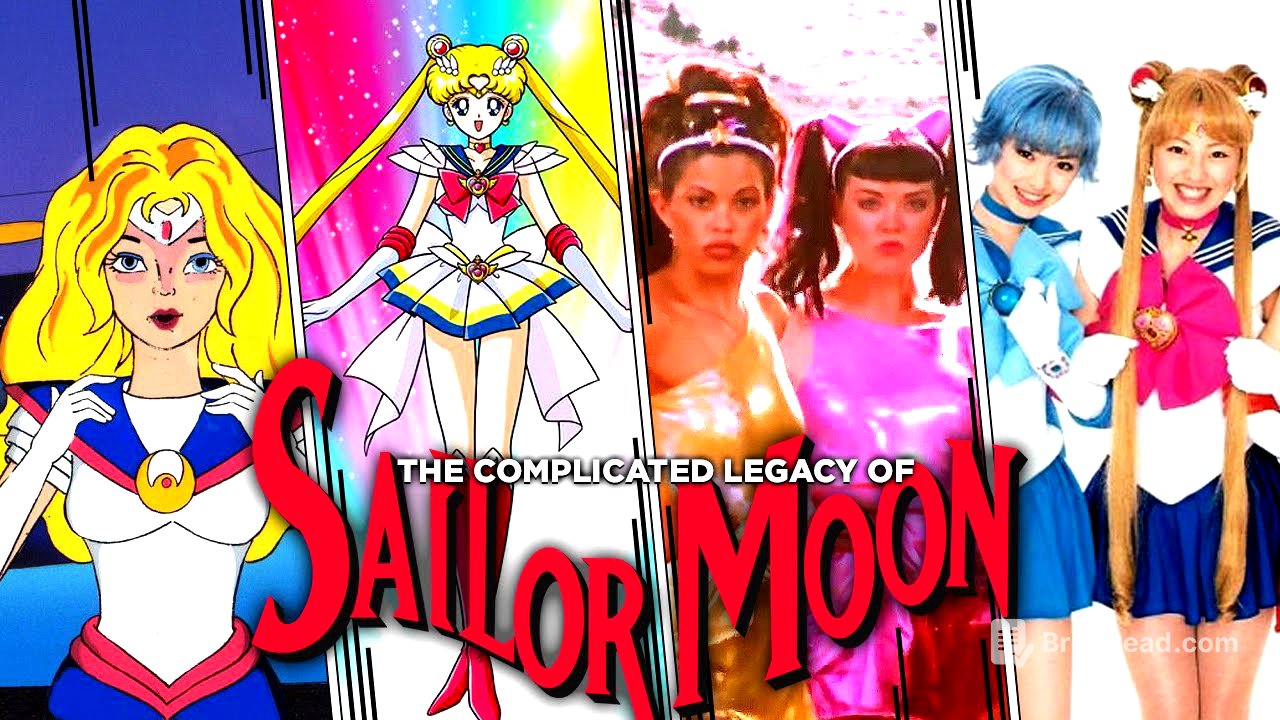TLDR;
This video explores the history of Sailor Moon, from its origins as a manga created by Naoko Takeuchi to its global phenomenon status. It covers the creation of the manga and anime, its initial unsuccessful attempts to break into the US market, and its eventual triumph as a beloved and influential franchise. The video also touches on the cultural impact of Sailor Moon, particularly its role in opening up the anime and manga industry to female creators and fans.
- Sailor Moon's creation and evolution from manga to anime.
- Initial struggles and failed attempts to enter the US market.
- Eventual success and cultural impact on the anime and manga industry.
Intro [0:00]
The video introduces the topic of Sailor Moon, highlighting its multifaceted nature as comics, animated series, toys, and more. Due to the extensive nature of the Sailor Moon franchise, the video will focus on its origins and its journey to the U.S., including multiple attempts and transformations. The series revolves around Usagi Tsukino, a young girl who becomes Sailor Moon, a superheroine battling the Dark Kingdom with the help of other Sailor Guardians.
Naoko Takeuchi's Inspiration [3:17]
Naoko Takeuchi, the creator of Sailor Moon, dreamed of becoming a comic book artist. Despite her father's advice to pursue a more stable career, she earned a degree in chemistry and a license in pharmaceutical medicine. In Japan, comics, known as manga, are a socially acceptable medium with genres like shonen (for young boys) and shojo (for young women). Takeuchi wanted to create a comic about superhero girls in space, with her editor suggesting the sailor suit costume. Her first comic, Codename Sailor V, featured Minako Aino as Sailor Venus.
From Codename Sailor V to Sailor Moon [5:41]
Toei Animation wanted to adapt "Codename Sailor V" into an animated series but sought to broaden its appeal. Influenced by the Super Sentai series, Takeuchi shifted the focus to a team of Sailor Guardians led by Sailor Moon. The Sailor Moon manga began similarly to "Codename Sailor V," with Usagi Tsukino becoming Sailor Moon. Takeuchi maintained creative control over both the comic and the animated series. The popularity of the series led to additional story arcs, making Takeuchi a wealthy but conflicted creator.
Initial US Attempts and "Saban Moon" [9:03]
In 1993, Renaissance Atlantic Entertainment sought to create a similar product for girls, believing Sailor Moon could be it. However, concerns about cultural differences and strict U.S. standards led to significant proposed changes that Toei rejected. Renaissance Atlantic, with Bandai's interest in selling toys, developed a hybrid live-action/animated pilot with Tune Makers. This reimagining, sometimes called "Saban Moon," featured a more westernized style, diverse cast, and space sail boards. The concept was ultimately declined due to cost.
Deke's Adaptation and Censorship [11:29]
In 1995, Toei licensed Sailor Moon to Deke Productions, who brought in Optimum Productions for the English dubbing. Deke and Optimum heavily censored the show, altering the opening theme, removing nudity, reducing violence, changing character names, rewriting dialogue, and reinterpreting relationships. Notably, the romantic relationship between Sailor Uranus and Neptune was changed to them being cousins.
Cancellation and Revival [13:09]
The Deke adaptation premiered in Canada and the U.S. in 1995 but was canceled due to low ratings in the U.S. Fans launched the "Save Our Sailors" campaign to revive the series. Irwin Toys and General Mills worked to complete the series, and it returned to the U.S. on the USA Network in 1997 and later on Cartoon Network's Toonami block in 1998.
Later Attempts and Cloverway's Dub [15:03]
Frank Ward attempted another live-action adaptation, "Team Angel," but it was unsuccessful. Deke merged with ABC and was later purchased by Disney, potentially considering a live-action Sailor Moon film, but this never materialized. Cloverway licensed seasons three and four, bringing back Optimum Productions for a less censored dub that aired on Toonami in 2002.
Modern Era and Cultural Impact [17:39]
In 2009, Sailor Moon experienced a resurgence in popularity, leading to Viz Media acquiring the rights in 2014 to release uncut, restored versions of the series. Studiopolis redubbed the series, which began streaming on Neon Alley and Hulu. Sailor Moon has been a successful merchandising brand, with various products and video games. In 2003, a live-action Sailor Moon show, "Pretty Guardian Sailor Moon," aired in Japan. Sailor Moon Crystal was released in 2014, and Sailor Moon Eternal in 2021, both available on Netflix. Sailor Moon played a significant role in bringing anime and manga to the world, particularly for female fans, empowering women creators and characters.
